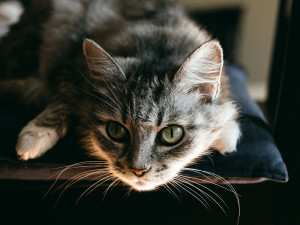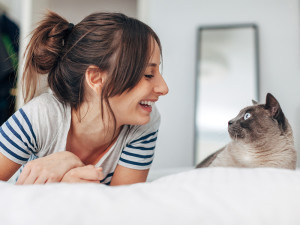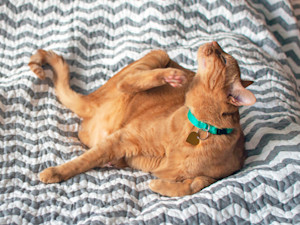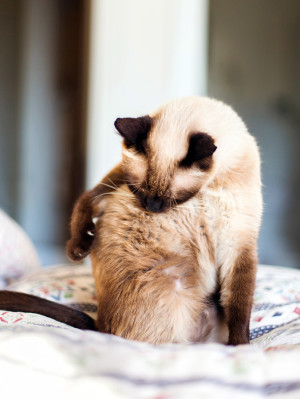My Cat Has One Watery Eye and No Other Symptoms—What Does It Mean?
Here’s how to know the difference between when it’s not a big deal, and when this warrants a vet visit.
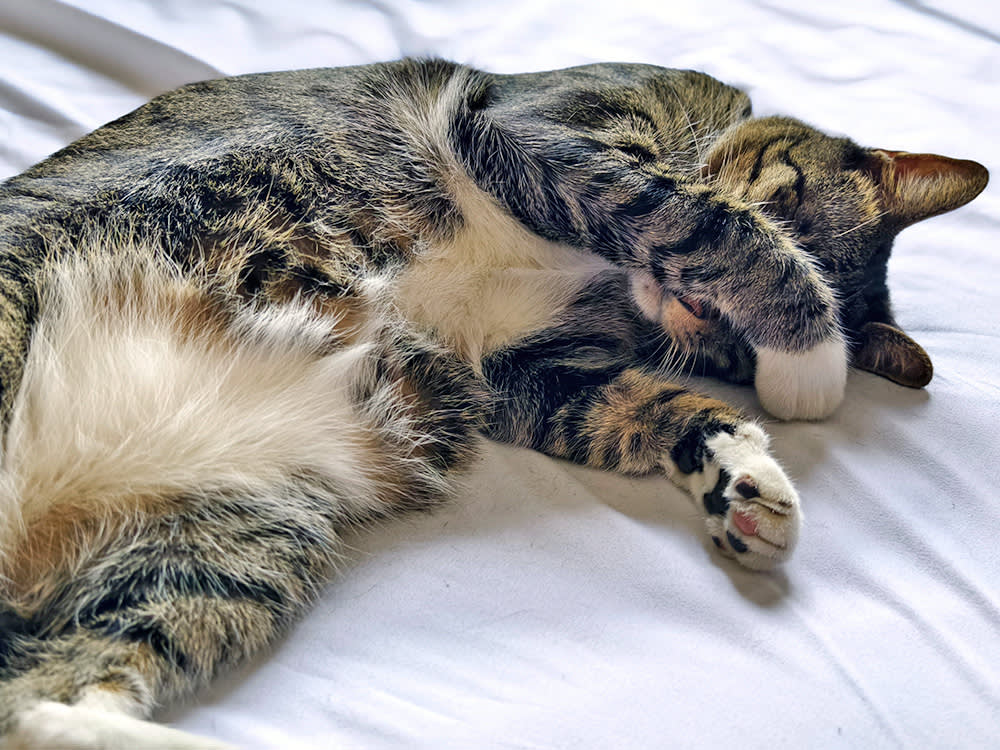
Share Article
In This Article:
Why Does My Cat Have One Watery Eye? Symptoms Associated With It Common Causes of One Watery Eye in Cats When to Seek Vet Care How Vets Diagnose Watery Eyes Treatment of Watery Eyes
All your cat’s body parts are important, but their eyes are critical. Cats’ eyes are essential for survival, hunting abilities, and their overall wellbeing. They can see in low light, detect movement with precision, and communicate emotions.
So, what’s up if one of their eyes is always watery, but the other seems just fine? Does that mean they’re losing this all-too-important sense? Not necessarily. (In fact, probably not.) Read on to learn why this may be happening, and what you can do to help your cat.
Why does my cat have only one watery eye?
When an eye looks abnormal, this could represent a problem with the eye itself, or it could suggest a systemic problem. While many eye abnormalities can occur in both eyes, some will affect only one eye. Identifying the cause of an eye problem can indicate the treatment needed to heal it, and lead to a more successful outcome.

Symptoms associated with one watery cat eye
Your kitty may show other symptoms when there’s an eye problem. On the other hand, there may be no other signs. Pet parents should look out for these signs involving just the eye area:
Occasional blinking or squinting
Mild redness around the affected eye
Pawing at the eye
Slight swelling of the eyelid
Tear stains on the fur around the eye, usually below the eye
If any of these symptoms worsen or persist, go to a vet.
Common causes of one watery eye in cats
Below are several possible causes for a watery eye in a cat.
Foreign particles in the eye
If your cat’s eye is watering, there could be something in it, such as dust, pollen, or small debris, leading to temporary irritation and increased tear production. A foreign particle may be the culprit if your kitty has been in a new environment, playing outdoors, or digging in particularly dusty litter. Typically, the eye clears up once the irritant is removed. You may not need to do anything, or you could rinse the eye with a saline solution. Be sure that the saline solution is sterile and preservative-free.
Environment
Certain environmental substances, such as smoke, fragrances, or even a change of seasons, can irritate one eye. Environmental irritants might be the issue if your cat’s symptoms improve in a different setting.
Blocked tear duct
This is most often the cause of a watery eye. Cats have a small tear drainage system that can sometimes get blocked. When this happens, tears overflow and spill onto the fur. This often starts with an infection that causes inflammation in the tear duct.
Eye injury
Especially in a multi-cat household, discharge from one eye may be from scratches from another cat, rough play, or accidental trauma. If you suspect that they have an injury, seek out veterinary attention promptly.
Mild eye infections
Severe infections will cause additional symptoms, but a mild infection can appear with just a watery eye. Bacterial, viral, or fungal infections might be involved, requiring treatment by your veterinarian.
Allergies
Allergies can make your eyes water, and the same is true for cats. Cats can have allergic reactions to dust, pollen, mold, cleaning products, or even certain foods. Most allergies, except for food allergies, are seasonal. If that is the case with your cat, allergies may be responsible for the watery eyes. However, most allergies would affect both eyes.
Eyelid or eyelash abnormalities
Some cats’ eyelids or eyelashes grow abnormally. This is usually a genetic or acquired condition. If their eyelids roll inward, this is called entropion. This issue can irritate the cornea and cause excessive tearing. Entropion requires veterinarian assistance.
Other potential causes
Other conditions, such as mild conjunctivitis, minor corneal ulcers, or even dental problems, could cause one watery eye. If the condition persists or worsens, a veterinarian should be consulted.
When to seek vet care for your cat’s watery eye
If your cat develops a watery eye, you should visit a vet if they show any of the following signs.
The tearing lasts more than 48 hours.
Redness, swelling, or discharge accompanies the watery eye.
Your cat starts squinting or keeping the eye closed.
Your cat is pawing at the eye.
You can see a foreign object lodged in the eye.
Your cat’s behavior changes, such as having a reduced appetite or lethargy.
How vets diagnose watery eyes in cats
Your vet will examine the eyes thoroughly. Here are some diagnostic tests they may perform.
Fluorescein staining: A dye will be put into the eye to look for scratches or ulcers.
Tear duct flushing: This can assess whether a blocked tear duct is the issue.
Ophthalmoscope exam: This will examine the inner structures of the eye.
Schirmer tear test: This test measures the amount of tears produced.
Allergy or infection testing: This will determine if an allergic reaction or infection is a factor.
Treatment of watery eyes in cats
To properly treat the eye, you must find out the cause of the watery eye. The following are possible treatments.
Flushing the eye: A sterile saline solution may flush debris out.
Eye drops or ointments: Your vet may prescribe antibiotics or anti-inflammatory medications for inflammation or an infection.
Allergy management: If allergies are the culprit, antihistamines or environmental changes might help. There are allergy shots a dermatologist can prescribe based on the results of allergy tests.
Surgery: Surgical correction might be necessary if your cat has a blocked tear duct or eyelid abnormality. However, it is not uncommon to leave a blocked tear duct alone. This is more of an aesthetic concern than a medical one, and requires you to wipe the fur below the eye daily.
Home remedies for one watery eye in cats
If your cat has a mild, watery eye and no other symptoms, you can try:
Using a warm, damp cloth to gently wipe the eye
Keeping your cat’s environment free from dust and strong fragrances
A pet-safe sterile, preservative-free saline solution to rinse the eye
Ensuring your cat doesn’t rub or scratch their eye excessively
However, if symptoms persist or worsen, veterinary care is recommended.
Bottom line
Several things, including blocked tear ducts, minor irritants, environmental factors, allergies, infections, or structural abnormalities, can cause a single watery eye in cats.
A veterinary visit is best if the condition persists or is accompanied by other symptoms.
FAQs
How do you treat a cat with one watery eye and no other symptoms?
If your cat’s eye is only mildly watery, wipe the eye gently with a soft, moist cloth, flush the eye with sterile saline, keep your cat away from potential allergens, and monitor closely. See a vet if there are other symptoms or if the watery eye doesn’t resolve within 24 to 48 hours.
Should I take my cat to the vet for a watery eye?
A vet visit is recommended if the tearing is persistent, worsening, or accompanied by redness, swelling, or discharge. A professional should assess chronic or unexplained watery eyes even if no other symptoms are present.
Why is my cat tearing out of one eye?
Several things, including blocked tear ducts, minor irritants, environmental factors, allergies, infections, or structural abnormalities, can cause a single watery eye in cats. If it doesn’t resolve quickly, a vet evaluation is advised.
What does it mean when one eye keeps watering?
Chronic watering from one eye can indicate an underlying issue such as a tear duct problem, eyelid abnormality, or low-grade infection. If your cat’s eye continues to tear without improvement, veterinary consultation is necessary to determine the cause.
References
Nasisse, Mark P, et al. “Clinical and Laboratory Findings in Chronic Conjunctivitis in Cats: 91 Cases (1983–1991).” Journal of the American Veterinary Medical Association, vol. 203, no. 6, 15 Sept. 1993, pp. 834–837, https://doi.org/10.2460/javma.1993.203.06.0834opens in new tab.
Stiles, Jean, and Beth Kimmitt. “Eye Examination in the Cat.” Journal of Feline Medicine and Surgery, vol. 18, no. 9, 25 Aug. 2016, pp. 702–711, https://doi.org/10.1177/1098612x16660444opens in new tab.
Wallin‐Haakansson, N., and K. Berggren. “Canaliculorhinostomy as a Treatment for Nasolacrimal Duct Obstruction in Dogs and Cats.” Journal of Small Animal Practice, vol. 61, no. 6, 15 Apr. 2020, pp. 346–353, https://doi.org/10.1111/jsap.13138opens in new tab.
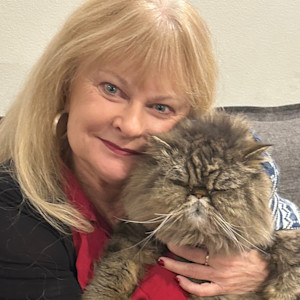
Dr. Shelby Neely, DVM
Dr. Shelby Neely is a freelance writer and veterinarian who graduated from the University of Pennsylvania School of Veterinary Medicine and has practiced veterinary medicine for 30 years, specializing in small animals. Her work has appeared in Allivet, AsktheCatDoctor, WhiskerDocs, Ask the Cat Doctor Radio, Ask the Cat Doctor TV, and numerous other websites, brochures, newsletters, newspapers, and ebooks. In her spare time, Dr. Neely likes to spend time with her three children, two grandchildren, three cats, two grand-cats, and five grand-dogs.
Related articles
![Smiling Woman And Cat Looking Each Other In The Bedroom.]()
What to Know About Eye Infections in Cats
Cats’ eyes are strikingly beautiful, but goopy, irritated eyes are not.
Can You Give Cats Benadryl? (Dosage Guide)
And learn what alternatives might be better.
![Orange cat scratching itself in bed.]()
How Do You Soothe Your Cat’s Itchy Skin?
Your miserable kitty would like to know, too.
![a cat licking a hot spot]()
How to Spot, Treat, and Prevent Hot Spots on Your Cat
Hot spots are so not hot—your cat agrees.
